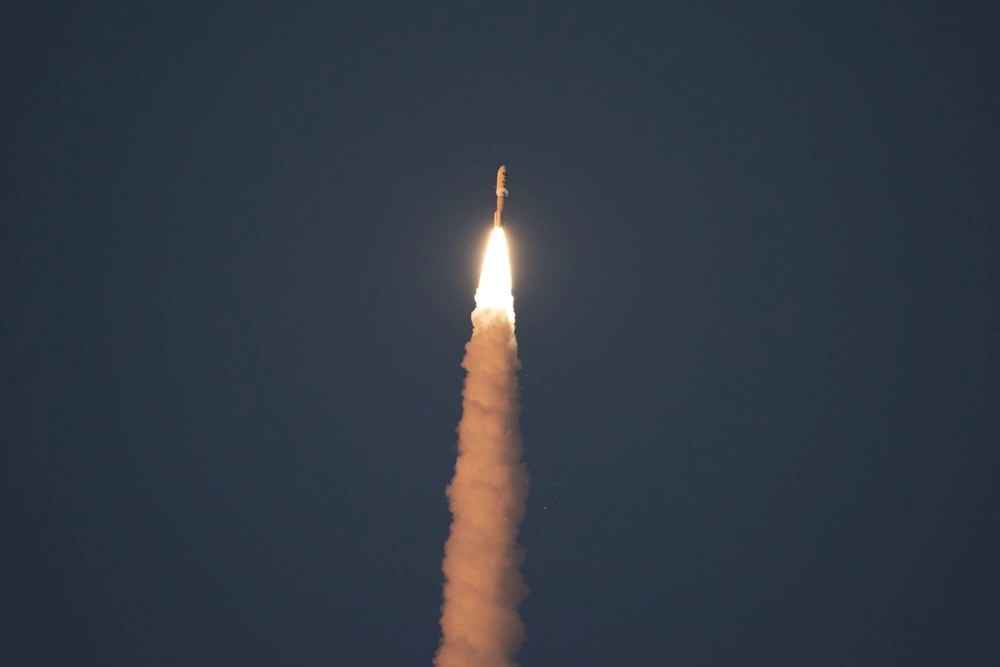“The truth about space … is that it has a deep effect on our everyday lives. And the satellites that orbit hundreds or thousands of kilometres above our heads can contribute to our lives in very direct ways.”
– Executive Vice-President Margrethe Vestager
Earlier this year, UNIDIR set out to explore ‘security’ and ‘safety’ in the space context at the suggestion of some Vienna-based UN delegations. This distinction is less clear than at first glance, and how it is understood has consequences in terms of the policies and behaviour of space users.
Ideally, there is a clear boundary. ‘Security’ is related to the maintenance of peace and stability. ‘Safety’ is the combination of measures precluding risks and protecting space systems during normal operations. Both terms have been in use since the adoption of the Outer Space Treaty (OST) in 1967.[1] Their respective definitions, as expressed in the drafting of the OST, subsequently served as the basis for the development of binding and voluntary instruments related to space activities, the most recent being the Guidelines for the Long-term Sustainability of Outer Space Activities. [2]
However, it’s apparent that States can interpret the terms space ‘safety’ and ‘security’ in different ways. A clearer mutual understanding of the distinction between ‘security’ and ‘safety’ could be helpful at a time when space activity and the number of space stakeholders is growing, including in implementing or developing further measures aiming at better safeguarding their space-based activities.
The conduct of space activities is a global matter. Today, space infrastructure is becoming ever more important for national defence in more countries as well as for burgeoning civil, economic and commercial interests. This dependency on space infrastructure creates a double vulnerability – in outer space and on the ground. The ‘safety’ and ‘security’ of many activities on Earth are underpinned by ‘safety’ and ‘security’ of infrastructure in outer space such as satellites, just as more countries are developing counterspace capabilities.[3]
One important benefit of the ‘security’ versus ‘safety’ distinction is that it helps the international community to build safety measures applying to space operations like the Guidelines for the Long-term Sustainability without having to consider certain security-related issues that might result in a political impasse.
Yet the notions of space ‘safety’ and ‘security’ remain linked. For example, lack of information about the number and position of space objects is a safety issue because it increases the probability of accidental collisions between satellites of all types, whereas opacity and lack of information about a space object, such as its capabilities and limitations, is related to security because of the strategic advantage this information conveys. This can be especially tricky with satellites that have both military and civil functions such as communication, remote-sensing and navigation.
Today the reality is that military operations are increasingly supported by space infrastructure that is also critical to society in general. Targeting of these space objects, for instance with direct-ascent anti-satellite missiles or co-orbital drones, could cause major indirect, collateral damage to civilians on the ground. It might also create long-lived space debris that would further endanger the unimpeded use of space by anyone.
Altogether, these developments suggest a feedback loop between safety and security in which the intentional disruption or destruction of satellites impacts the safety of the space environment and can, in turn, lead to tenser situations between geopolitical rivals. If, without safety measures, security in space cannot be guaranteed, military activities related to defence and security can have an adverse impact on safety.[4]
Understanding the relationship between safety and security is key to the further development of a comprehensive framework of responsible behaviour in outer space and to providing a more objective basis for interpreting established treaties in “good faith in accordance with the ordinary meaning to be given to the terms of the treat[ies] in their context and in the light of [their] object and purpose.”[5]
To that end, how could space safety and space security be commonly understood, consistent with the objects and purposes of existing treaties in this field, and their ordinary meanings?
-
Space safety is a result of measures precluding inherent malfunction and mitigating the risks of accidental damage that would be caused by or undergone by a space object, including its component parts.
Safety measures are related to the normal functioning of a satellite, from its design, fabrication and encryption of its critical communications to normal operations and subsequent debris management. A safety approach would be to protect a space-based asset against malfunctioning by reducing its defects and fixing any issues arising during normal operations, whether it is a manufacturing defect, a bad design or an error in the computing system. Such an approach would also consider the space environment to address any issue harmful to crewed missions or to other space objects. Safety measures may involve ISO standards for space systems, government licenses or examinations, or a comprehensive framework for a graveyard orbit.
Because space activities are multiplying, safety-related issues – like debris from collisions – involve a growing range of actors and assets, both civilian and military. The prudent reasonable behaviour of such actors should reduce the probability or even severity of the damage caused inadvertently to space objects, and thus any knock-on disruption and harm on the ground. In other words, safety measures cover the reduction of risks, as in the conventional weapons area like safe ammunition stockpile management. One parallel is with nuclear safety. Just as one of its major concerns is the harmful consequences caused by radioactive materials released into the environment, space safety concerns risks like those caused by orbiting debris that can collide with other space objects and cause subsequent harm. The Space Debris Mitigation Guidelines issued by COPUOS show the importance of technical safety standards due to the damaging nature of debris and other space assets.[6]
-
Space security is the protection of a space object, including its component parts, against the threat of intentional actions undertaken by external or unauthorized actors.
Rising strategic tensions on Earth between the leading military powers, concerns about ground-based, direct-ascent anti-satellite interceptor tests, unauthorized close, co-orbital manoeuvres in space and various cyber and electronic attacks on satellite systems, have led to concerns that a ‘space arms race’ is developing. Although at present a very limited number of States have dedicated counterspace capabilities, intentional disruption or destruction of space objects could have major negative consequences for all.
Attacks on space objects also have the potential to increase tensions, and thus the potential for conflict, here on Earth.[7] Greater international cooperation, data-sharing, transparency about space military doctrines, and better space situational awareness are ways to strengthen security for all. It should be considered a basic, responsible behaviour for space operators to openly publish information about their space objects and on-orbit operations so as to avoid these being considered as potential threats.[8] This information helps in the tracking of objects and activities on orbit and so can further enhance transparency in the space environment.
The safety-security distinction serves as a starting point. It can help to identify which organisations and agencies should address which issues, and defines the stakeholders in those discussions, including from the commercial sector. This distinction could even help push forward agreement on the meaning of these terms in all UN official languages, which might help UN Members States in their efforts to keep the space environment both safe and secure for all.
Laetitia Cesari was a Graduate Professional with UNIDIR’s WMD and Other Strategic Weapons Programme in 2020 and is a doctoral researcher in Space Law and Cyber Law at the University of Luxembourg. The author would like to acknowledge in particular John Borrie, Daniel Porras, Wilfred Wan, James Revill, and Tom Hickey for their invaluable advice and support on this commentary.
[1] Treaty on Principles Governing the Activities of States in the Exploration and use of Outer Space, including the Moon and other Celestial Bodies 610 UNTS 206, 10 October 1967, Articles III and XII.
[2] United Nations Office for Outer Space Affairs, United Nations Committee on the Peaceful Uses of Outer Space, Report of the Committee on the Peaceful Uses of Outer Space – 62nd Session, 12–21 June 2019, Annex II, Guidelines for the Long-term Sustainability of Outer Space Activities of the Committee on the Peaceful Uses of Outer Space (A/74/20), p. 50.
[3] Martinez Peter, Challenges for ensuring the security, safety and sustainability of outer space activities, The Journal of Space Safety Engineering, Volume 6, 2019, Editorial, p. 65.
[4] West Jessica, Doucet Gilles, From safety to security: reducing the threat environment through the responsible use of outer space, Ploughshares Survey Report, July 2020.
[5] United Nations, Vienna Convention on the Law of Treaties, Treaty Series, vol. 1155, 23 May 1969, Article 31.
[6] United Nations Office for Outer Space Affairs, United Nations Committee on the Peaceful Uses of Outer Space, Space Debris Mitigation Guidelines, endorsed by the General Assembly in its Resolution 62/217, 22 December 2007.
[7] Liddle Aidan, Disarmament blog: a new initiative on outer space security, Part of Conference on Disarmament, Foreign, Commonwealth & Development Office Blogs, August 2020.
[8] Johnson Kaitlyn, Key Governance Issues in Space, CSIS Aerospace Security Project, September 2020.

